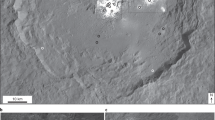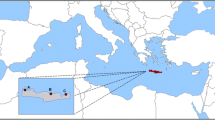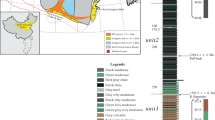I would like to thank Dr. Christos Zerefos for the opportunity to return to this beautiful country, where I once served as an American diplomat several years before I became the chief US negotiator for the Montreal Protocol. I am particularly honored to speak at the Academy of Athens, and feel awed to be in the company of so many of the world's most influential scientists, who contributed immeasurably to the extraordinary success of this historic treaty. Many of these renowned scientists are now personal friends, who became my mentors and associates during the complex negotiations to protect the fragile and endangered stratospheric ozone layer.
I am particularly grateful to Dr. Zerefos for generously assigning me the task of expounding the history of the Montreal Protocol in just 15 minutes. But I suppose that for an ancient civilization like Greece, the matter of time—whether 20 years or a quarter-hour—is not so important. I only hope that Dr. Zerefos will not stand behind me with a klepsydra—the ancient water clock that was used to time Athenian orators in the Agora—ready to pour water on me when my time is up!
Access this chapter
Tax calculation will be finalised at checkout
Purchases are for personal use only
Preview
Unable to display preview. Download preview PDF.
Similar content being viewed by others
References
Alliance for Responsible CFC Policy. (1985). An economic portrait of the CFC-utilizing industries of the United States (pp. 10–11). Rosslyn, VA.
Baumert, K. A., Herzog, T., & Pershing, J. (2005). Navigating the numbers: Greenhouse gas data and international climate policy (p. 12). Washington: World Resources Institute.
Benedick, R. E. (1991, rev. ed. 1998). Ozone diplomacy: New directions in safeguarding the planet. Cambridge, MA: Harvard University Press.
Benedick, R. E. (2007a). Avoiding gridlock on climate change. National Academy of Sciences: Issues in Science and Technology, Winter 2007, 37–40.
Benedick, R. E. (2007b). Moving on from Montreal. Guardian Unlimited (UK), September 16, 2007.
Brasseur, G., & Simon, P. (1988). Changes in stratospheric ozone: Observations and theories. Astronomica Acta, A-no.334, 9–11.
Brasseur, G., & Solomon, S. (1984). Anatomy of the middle atmosphere. Hingham, MA: D. Reidel. p. 410.
Crutzen, P. J. (1970). The influemce of nitrogen oxide on the atmospheric ozone content. Quarterly Journal of the Royal Meteorological Society, 96, 320–325.
Dotto, L., & Schiff, H. (1978). The ozone war. Garden City, NY: Doubleday.
Dowdeswell, E., & Obasi, G. O. P. (1995). Foreword. In R. Bojkov (Ed.), The changing ozone layer. Geneva: World Meteorological Organization and United Nations Environment Programme.
Farmer, J. C., Gardiner, B. G., & Shanklin, J. D. Large losses of total ozone in Antarctica reveal seasonal ClOx/Nox interaction. Nature, 315, 207–210.
Molino, M. J., & Rowland, F. S. (1974). Stratospheric sink for chlorofluorocarbons: Chlorine atomic catalyzed destruction of ozone. Nature, 249, 810–12.
Reagan, R. (1988). Statement April 15, 1988; reprinted in President signs protocol on ozone-depleting substances. Department of State Bulletin, June 1988, 30.
Rowland, F. S. (1989). Chlorofluorocarbons and the depletion of stratospheric ozone. American Scientist, 77, 37–39, 41–43.
Scotto, J. (1988). Biologically effective ultraviolet radiation: Surface measurements in the United States, 1974–85. Science, 239, 762–764.
Solomon, S. (1988). The mystery of the Antarctic ozone hole. Reviews of Geophysics, 26(1), 144– 146.
Stolarski, R. S. (1988). The Antarctic ozone hole. Scientific American, 258(1), 35–36.
Stolarski, R. S., & Cicerone, R. J. (1974). Stratospheric chlorine: A possible sink for ozone. Canadian Journal of Chemistry, 52, 1610–15.
United States Environmental Protection Agency. (1987). Protection of stratospheric ozone. Fed eral Register 52, 239, 749.
World Meteorological Organization. (1986). Atmospheric ozone 1985: Assessment of our understanding of the processes controlling its present distribution and change. Geneva: WMO.
Author information
Authors and Affiliations
Editor information
Editors and Affiliations
Rights and permissions
Copyright information
© 2009 Springer Science + Business Media B.V.
About this paper
Cite this paper
Benedick, R.E. (2009). Science Inspiring Diplomacy: The Improbable Montreal Protocol. In: Zerefos, C., Contopoulos, G., Skalkeas, G. (eds) Twenty Years of Ozone Decline. Springer, Dordrecht. https://doi.org/10.1007/978-90-481-2469-5_4
Download citation
DOI: https://doi.org/10.1007/978-90-481-2469-5_4
Publisher Name: Springer, Dordrecht
Print ISBN: 978-90-481-2468-8
Online ISBN: 978-90-481-2469-5
eBook Packages: Earth and Environmental ScienceEarth and Environmental Science (R0)




